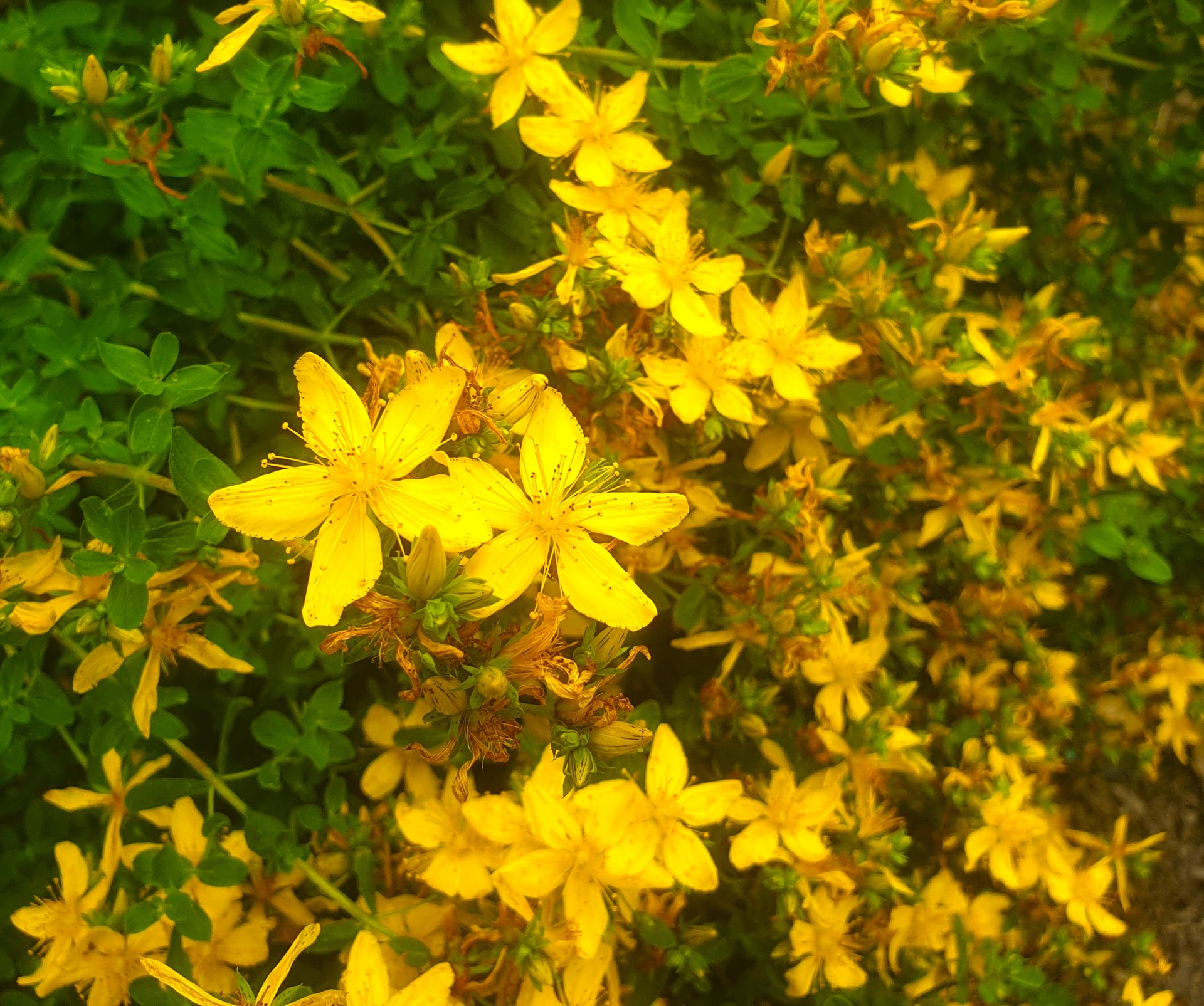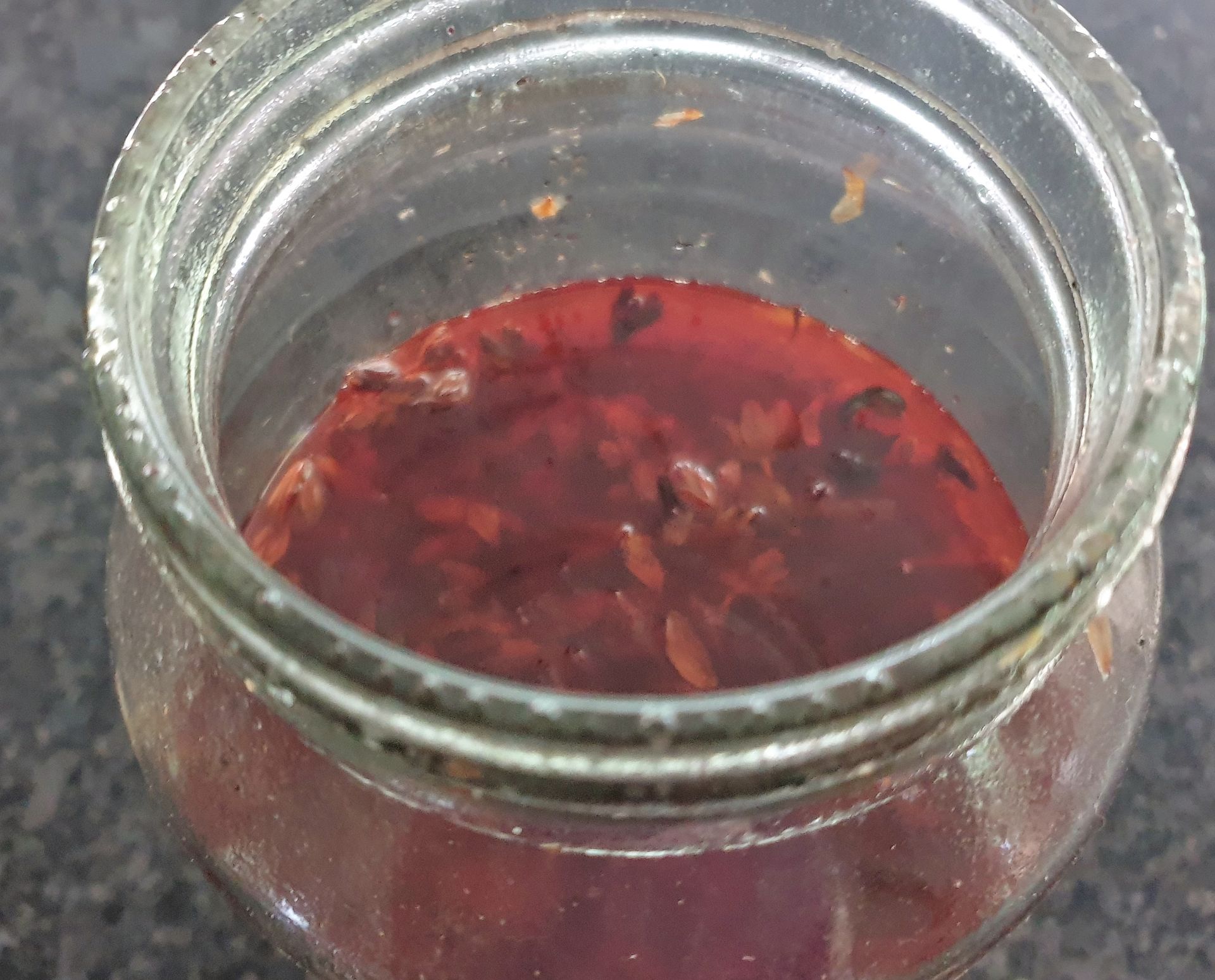St Johns Wort Oil
January 2022
St Johns Wort flowers must be infused fresh into oil as the dried flowers do not extract into oil. This means that creating the oil is a summer job - in Canterbury the plant starts flowering just before Christmas and continues through the summer.

St Johns Wort flowers ready for harvesting
The process for infusing St Johns Wort oil is a bit more prescriptive than most of the other oils that you can do:
Firstly - pick flowers and buds on a nice sunny day after the dew has dried off. For the oil, only the flowers are used. For teas and tinctures, you use the top 10cms of the plant which includes both flower and leaf.
Secondly - bruise the flowers and buds - I use a rolling pin which I run over the flowers and buds.
Thirdly - place the flowers and buds in a jar and cover with oil - I use NZ sunflower oil - and place in a sunny position for two weeks.
Fourthly - press out the beautiful red oil. When pressing oils made from fresh plant material you need to be aware that there will be lots of not so nice stuff which you want to exlude from your oil. Don't press too hard - you don't want to squeeze all the water into your oil. Also, leave your pressed oil to sit for a day and then carefully decant the oil into a clean container. There will be alot of sediment at the bottom of the oil which needs to be thrown into your compost heap. This does seem to be wasteful but you really don't want all of that yucky stuff in your beautiful oil.

St Johns Wort Oil after steeping in the sun for 2 weeks
Uses
St Johns Wort oil is very healing and can be used on bruises, burns, and sprains. It is also anti inflammatory and can be massaged into the body to provide relief from painful sciatic nerve and shingles.
You can also make an oil compress for treating damaged nerve tissue and sore muscles by soaking a cloth in the oil and placing over the injured area. This can be used on broken and unbroken skin.
The oil can also be used as the basis for a salve or cream which retains the same healing qualities.

Freshly pressed St Johns Wort Oil
Plant Identification
There are over 300 different species of Hypericum and it is important that you use Hypericum perforatum as this has the most medicinal properties. Hypericum perforatum has distinctive leaves with small black dots that look like tiny holes - hence the perforatum of the botanical name. The flowers and leaves are also much smaller than the more common Hypericum found in many gardens and the plant generally has a much more upright nature compared to the more sprawling, common Hypericum.
Plant identification is a very difficult thing to learn online, so as a rule of thumb, don't use something unless you are completely sure you know what it is.